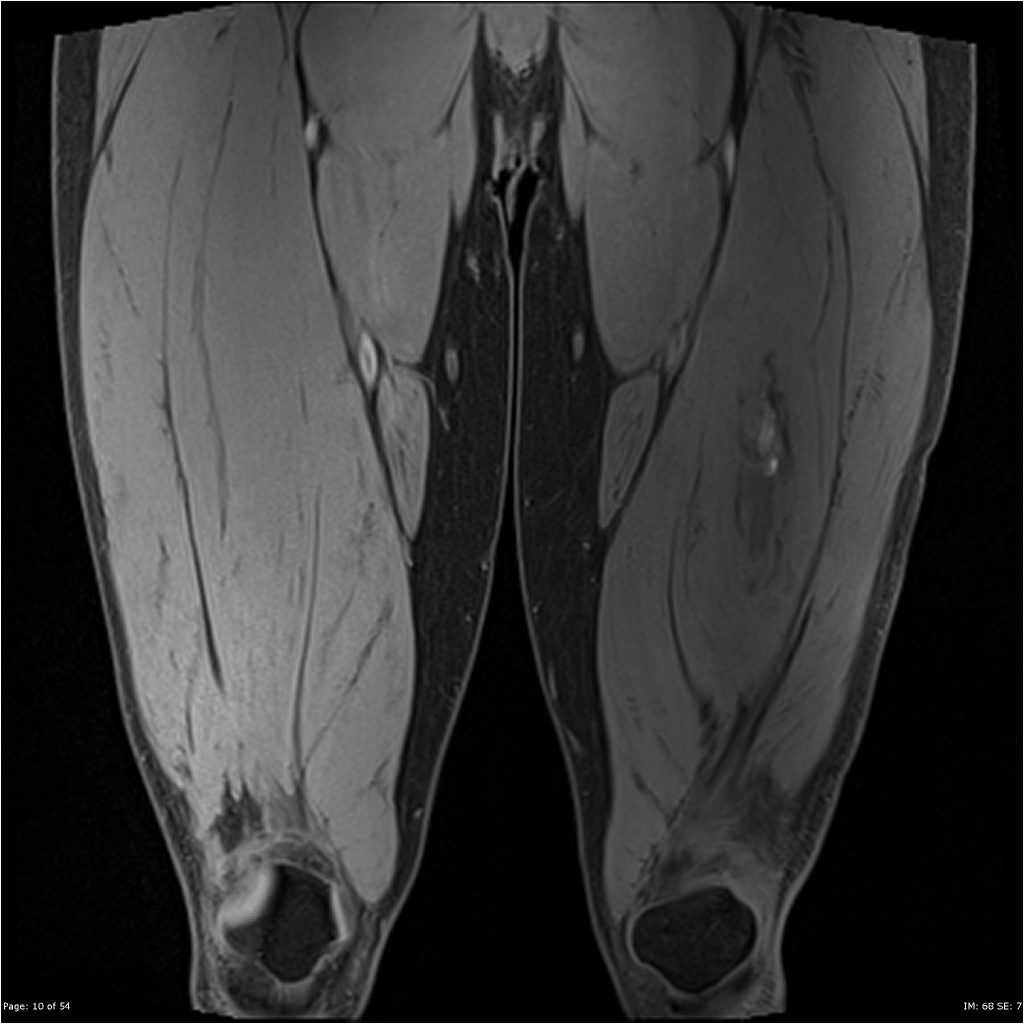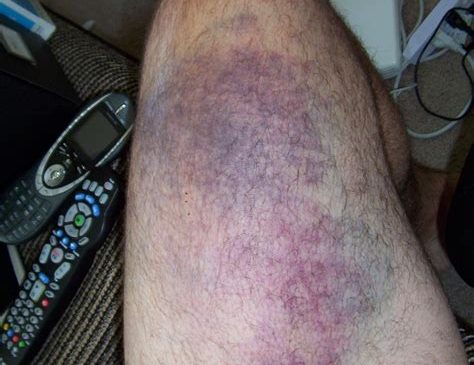A ‘dead leg’ is a common occurrence in contact sports which requires careful monitoring. There are two types of bleeding that occur from the direct impact – intramuscular and intermuscular. Intermuscular refers to bleeding that occurs out with the muscle belly and therefore can disperse around thigh; this is more likely to show up as a bruise. An intra-muscular injury is bleeding within the muscle sheath that encases each muscle. They don’t bruise as the inter-muscular injuries and are much more difficult to manage. They are more likely to lead to a complication called myositis ossificans that is a calcification of the hematoma in the thigh and may require surgical intervention. Torres et al 2017.


There are three classes of quadriceps contusions: –
| Grade | Knee Range of Motion | Gait | General Presentation |
| Grade 1(Mild) | More than 90° | Normal | Tightness in thigh. Cannot walk quite properly. Possible swelling. Straightening knee against resistance unlikely to produce much pain. Lying on front and bending knee allows full range of motion |
| Grade 2(Moderate) | Between 45° and 90° | Antalgic(Altered Gait) | Cannot walk properly. Twinges of pain in thigh. Swelling. Pressing produces pain. Straightening knee against resistance produces pain. Cannot fully bend knee |
| Grade 3(Severe) | Less than 45° | Severe Limp | Cannot walk without crutches. Severe pain. Bad and immediate swelling. Static contraction produces pain 3 – 12 weeks out of competition. |
Milne et al 2004
Get in contact with OST for any advice on how to manage a dead leg and for follow up treatment protocols.


Recent Comments